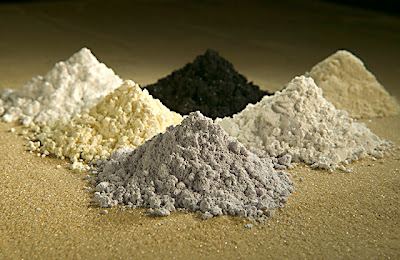A New 'RARE’ War
Rare Earth elements can fuel the next war among nations
There seems to be a new entry in the catalogue of war for resources. After oil, gold and water, the latest addition are the rare earth elements. Rare earth element is a collection of seventeen chemical elements like scandium, yttrium and the fifteen lanthanides. They are the key minerals used in green technology and precision weapons production — from iPads to electric cars, precision weapons to electronic goods.
China gained monopoly after mines of rare earth elements across the world were closed down owing to low cost exports of the same by China. When China instituted an export ban on rare earth elements to Japan on Sept 22, 2010, it intensified concerns on worldwide production of major electronic products and defense equipments. China today controls 36 million tons of the world's 88 million ton rare-earth element deposits, more than the combined deposits of the US and Russia. It also supplies over 97 per cent of rare earth elements to the world. According to surveys, over 1,24,000 metric tons of rare earth elements were produced in 2009 while the global demand was more than 1,34,000 metric tons. This demand-supply gap is encouraging black marketing and illegal trading; more so, as the worldwide demand is expected to rise to 1,80,000 metric tons by 2012. The global trade in rare earths is estimated to reach $3 billion by 2014.
These elements are so diversely spread that mining alone would fetch no economic benefit. Even the US for the last 15 years, is completely relying on imports. In spite of other countries crafting policies to make their rare earth elements mines more economical, the monopoly will be there with China — at least for next few decades. Since rare-earth mining produces radioactive waste and discharge of such waste calls for strict guidelines in developed countries, China seems to be the best option. The country has allotted billions into basic and applied research on rare earth elements; China also has two state laboratories exclusively for R&D on rare-earth elements and own two journals dedicated to rare earth metals. Japan has come out with an innovative alternative that can alter the rules of trade in this sector but unfortunately is expensive and calls for huge investment as of now. This Japanese alternative will extract rare earth elements through recycling. It is estimated that around 3,00,000 tons of rare earths stored in unused electronics can be tapped after recycling.
China since July 2010 has reduced export quotas of rare earth elements by 72 per cent, thus inflating prices by six-folds which will make a major dent on global availability and pricing and eventually jeopardize defense and electronic goods production. What is worse is that mines across the world would take a minimum of 10-15 years before they become operational. Hence it makes more sense for countries to go the Japanese way as it can guarantee both economic and environmental benefit.








